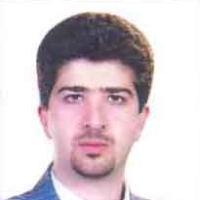Evaluating the Effect of Physical Architectural Elements on Upgrading Citizens’ Vitality in Urban Pass Ways, Case Study: Afifabad Street in Shiraz
Author(s):
Article Type:
Research/Original Article (دارای رتبه معتبر)
Abstract:
Today, addressing the citizens’ vitality in urban spaces, especially in the city pass ways and its relation with architectural components is important. Understanding the role of these elements in promoting the vitality of citizens in urban pass ways is an important step towards strengthening the social presence of the people. Promoting the vitality of citizens, while creating and strengthening social interactions with other citizens, brings the use of this valuable opportunity to plan leisure activities and increase the vitality of citizens in urban spaces. The role of architectural elements in enhancing the face-to-face visits in streets and promoting their vitality due to the presence of these passages is very important. This research tries to understand the effective relationship between architecture physical elements and citizens’ vitality according to the importance of elements and architecture components and their role in upgrading the quality of urban spaces, specially urban streets. The aim of this research is to recognize the architectural physical elements in urban streets and their effects on citizens’ vitality. In this paper, identifying the effective factors on the promotion of vitality, illustrates the correlation between these components and the underlying factors of the urban architectural elements in an analytical model. In this research, in order to evaluate the effect of architectural elements on citizens’ vitality in urban pass ways, the dimensions and aspects of various elements of architecture in urban space are classified. Then the opinions of the thinkers about the vivid imagery of urban spaces are included in this ranking. By analyzing these votes, the vitality of these ideas is clarified and categorized. Thereafter, the library method has been used to study the components of the architectural elements that cause vitality in urban streets. Then, in order to understand the views of people such as business people, residents and pedestrians, a questionnaire with 43 items related to vitality components was used. The respondents included 125 women and 275 men. In other words, 31.5% of the respondents were women and 68.5% were male. 61% of the respondents were young people aged between 19 to 34, 15% of people aged between 10 to 18, and 3.5% of those aged between 55 and over. Regarding the degree of the respondents, 40% had a diploma and a high school diploma, 38.5% had a bachelor’s degree, and 17% had a master’s degree or a doctorate. It should be noted that 23.5% of the respondents, 21% were students, 16% were employees, 4.8% were housewives and 27.5% were freelancers. 18% of the respondents were residents of this street, 34% were street attendees and 44% of were the passersby. Of the 43 questions, 34 questions were evaluated using the Likert spectrum. The method used in this research is a survey and due to the uncertainty of the exact number of the statistical population, a non-probabilistic sampling method has been used in this research. The results of this research indicate that the socio-psychological factors with the rate of 0.749 compared to the physical-cosmic factors of 0.547, environmental factors of 0.312, and amenities and services of 0.514 on Afif Abad Street in Shiraz, have the greatest impact on the promotion of citizens’ vitality. According to the questions, assumptions and trends of the research, it was determined that the physical elements of the architecture, including the presence of suitable chairs and furniture, creating a pause and retreat space in front of the shops, color variations in the street body and buildings, as well as the design and proper location of water and green spaces are effective in promoting the vitality of citizens. Therefore, it is necessary that urban managers and designers design and correctly locate these elements in urban pass ways since they can have a significant effect on increasing the vitality, presence and vitality of the people in these urban public spaces. Also, according to the results of the study, it was found that the type of materials and colors of the facades of buildings, the availability of suitable parking for visitors, the visual coordination with the adjacent buildings, the presence of green spaces, sports and recreation centers , as well as the existence of service use in the evening and at night are the key points that should be considered by urban architects and planners in order to promote citizens’ vitality in urban passes. This emphasizes that the city managers should pay attention to the issue of cleanliness and health in the space. According to the results of the research, paying attention to this alone will have a very significant effect on increasing the vitality of citizens in these public spaces of the city.
Keywords:
Language:
Persian
Published:
Journal of Architect, Urban Design & Urban Planning, Volume:11 Issue: 25, 2019
Pages:
177 to 188
magiran.com/p1954337
دانلود و مطالعه متن این مقاله با یکی از روشهای زیر امکان پذیر است:
اشتراک شخصی
با عضویت و پرداخت آنلاین حق اشتراک یکساله به مبلغ 1,390,000ريال میتوانید 70 عنوان مطلب دانلود کنید!
اشتراک سازمانی
به کتابخانه دانشگاه یا محل کار خود پیشنهاد کنید تا اشتراک سازمانی این پایگاه را برای دسترسی نامحدود همه کاربران به متن مطالب تهیه نمایند!
توجه!
- حق عضویت دریافتی صرف حمایت از نشریات عضو و نگهداری، تکمیل و توسعه مگیران میشود.
- پرداخت حق اشتراک و دانلود مقالات اجازه بازنشر آن در سایر رسانههای چاپی و دیجیتال را به کاربر نمیدهد.
In order to view content subscription is required
Personal subscription
Subscribe magiran.com for 70 € euros via PayPal and download 70 articles during a year.
Organization subscription
Please contact us to subscribe your university or library for unlimited access!



